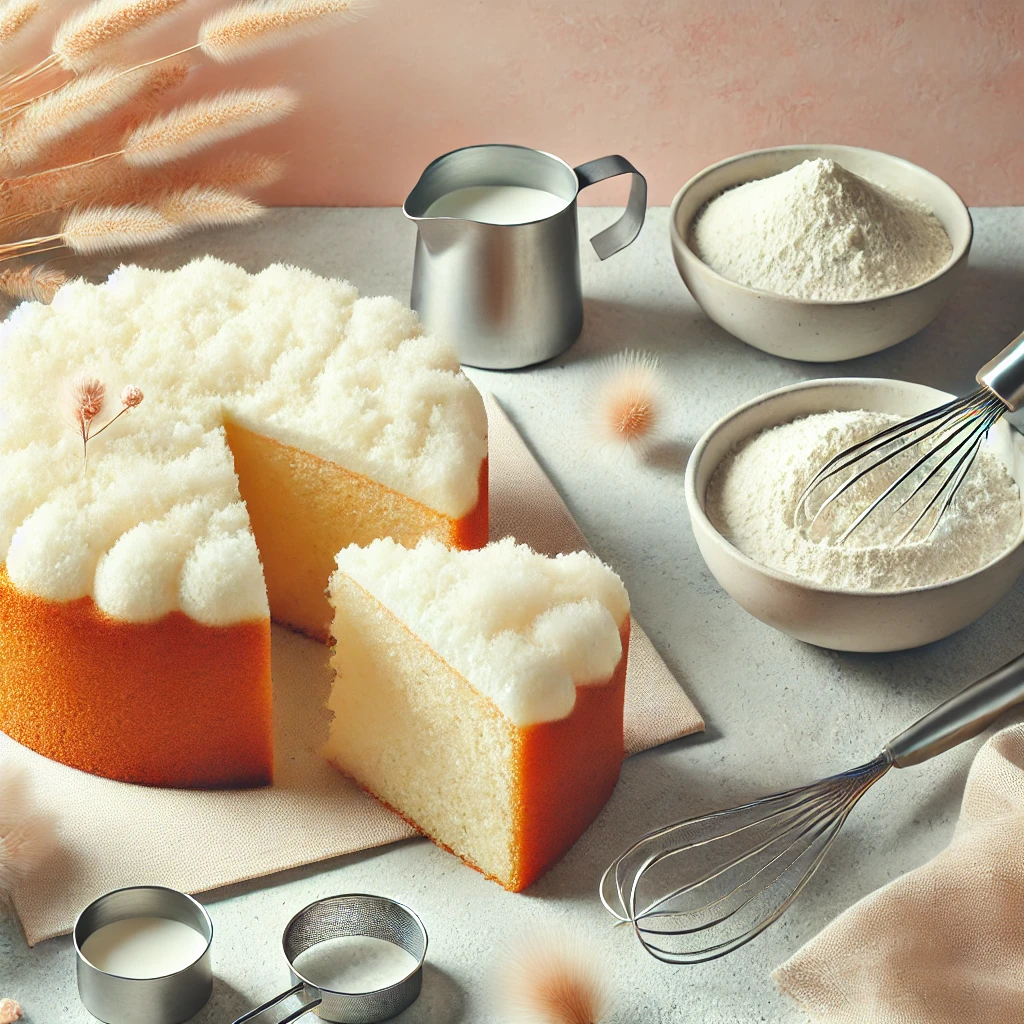
The Secret to Fluffy Cakes: Baking Tips for Beginners
Introduction: Why Does Cake Matter?
We’ve all been there, staring at a flat, dense cake wondering where we went wrong. But don't worry, you're not alone! The secret to baking fluffy cakes is not as complicated as it seems. Whether you’re making a special dessert or just baking for fun, these tips will help you achieve the soft, airy texture that will leave everyone asking for seconds.
Essential Baking Tools for Fluffy Cakes
Before diving into the recipe, let's talk about the must-have tools in your kitchen. Think of these tools as the trusty sidekicks to your superhero baker skills:
- Electric Mixer: A stand mixer or hand mixer helps you beat the batter without breaking a sweat.
- Measuring Cups and Spoons: Accuracy is key, so get yourself some reliable tools for precise measurements.
- Oven Thermometer: If you want a perfect bake, knowing the exact temperature of your oven is crucial.
- Cake Pans: Choose light-colored, non-stick pans to ensure even heat distribution.
Key Ingredients for Light and Fluffy Cakes
Fluffy cakes don’t happen by accident. The right ingredients, used in the right way, make all the difference. Here’s what you’ll need:
1. Butter or Oil
Fat is essential for moisture and tenderness. Using room-temperature butter allows it to trap air, helping your cake rise beautifully.
2. Eggs
Eggs help bind the ingredients and provide structure. They also contribute to the cake’s fluffiness.
3. Baking Powder and Baking Soda
These leavening agents are responsible for making your cake rise. Always ensure they're fresh for maximum lift!
4. Flour
Don’t use just any flour. For a lighter cake, cake flour is your best friend. It has a lower protein content, resulting in a softer texture.
Simple Baking Techniques for Perfect Desserts
Okay, now let’s get down to the nitty-gritty. It’s not just about the ingredients—how you treat them matters, too. Follow these simple techniques for a picture-perfect cake every time:
1. Cream the Butter and Sugar Well
This is where you trap air into the batter, which makes all the difference. Don't rush this step—beat the butter and sugar until it’s light and fluffy. Think of it like fluffing up a pillow; the fluffier, the better!
2. Don’t Overmix
Once you add the flour, mix gently. Overmixing can develop gluten, making your cake tough. Less is more here!
3. Room Temperature Ingredients
Cold ingredients can lead to clumping and uneven mixing. Take your butter, eggs, and milk out ahead of time so they can warm up to room temperature.
Baking Tips for Beginners: Common Mistakes to Avoid
Even seasoned bakers make mistakes, but you don’t have to! Here’s a list of common pitfalls and how to avoid them:
1. Incorrect Oven Temperature
Oven temperatures can vary, so an oven thermometer is your best friend. Baking at the wrong temperature can lead to uneven cakes or overly dry textures.
2. Not Measuring Ingredients Properly
Using too much flour or sugar can weigh your cake down. Always measure with the correct tools, and don’t just eyeball it!
3. Not Letting Your Cake Cool Properly
Patience is key. If you cut into your cake too soon, it may collapse or become soggy. Let it cool for at least 10 minutes in the pan before transferring it to a wire rack.
Quick and Easy Cake Recipes for Beginners
If you’re in a rush or just a beginner, try these quick and easy recipes for fluffy cakes that will wow your family and friends:
1. 15-Minute Vanilla Cake
This simple recipe will make you look like a pro in no time. With only a few ingredients, you'll have a fluffy, light cake ready in under 20 minutes.
2. Vegan Chocolate Cake
Who says vegan cakes can’t be fluffy? This recipe uses plant-based ingredients while still delivering a soft, moist texture.
Healthy 15-Minute Meals: Pairing Cakes with Light Dishes
Why not make a complete meal that includes your fluffy cake? Pair it with some healthy, quick meals like:
- Quinoa salad with avocado and veggies
- Grilled chicken with roasted vegetables
- Sweet potato and black bean tacos
Creative Salad Ideas for Lunch
If you’re looking for a refreshing and healthy lunch option, a creative salad can balance out the indulgence of your fluffy cake:
- Mixed greens with balsamic glaze
- Apple and walnut salad with lemon dressing
- Chickpea and quinoa salad with a lemon-tahini dressing
Conclusion: Your Path to Perfect Cakes
There you have it, the secret to making the fluffiest cakes that will impress every time! Whether you're baking for breakfast in bed or a family gathering, with the right ingredients, tools, and techniques, you’re well on your way to cake perfection. Don’t forget to experiment and enjoy the process. After all, baking is as much about having fun as it is about creating something delicious!
Frequently Asked Questions
1. How can I make my cake fluffier?
Ensure you’re using fresh baking powder and not overmixing your batter. Creaming the butter and sugar until light and fluffy also helps.
2. Can I substitute butter for oil in my cake recipe?
Yes! Oil can create a moist texture, but it won’t trap air the same way butter does. However, it will still give you a soft cake.
3. What’s the best way to prevent my cake from sticking to the pan?
Grease the pan with butter or oil and dust it lightly with flour. Alternatively, use parchment paper to line the bottom.
4. Can I make a gluten-free fluffy cake?
Absolutely! Use a gluten-free flour blend, and make sure you have a good balance of wet and dry ingredients to keep the cake soft.
5. How do I store leftover cake to keep it fresh?
Wrap the cake tightly in plastic wrap or store it in an airtight container. It should stay fresh for up to 3 days at room temperature.